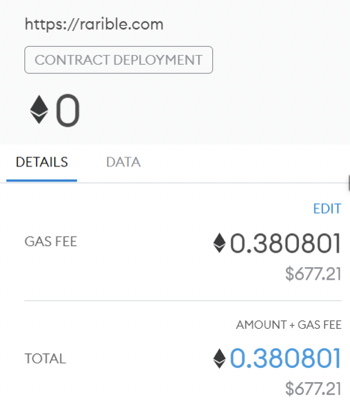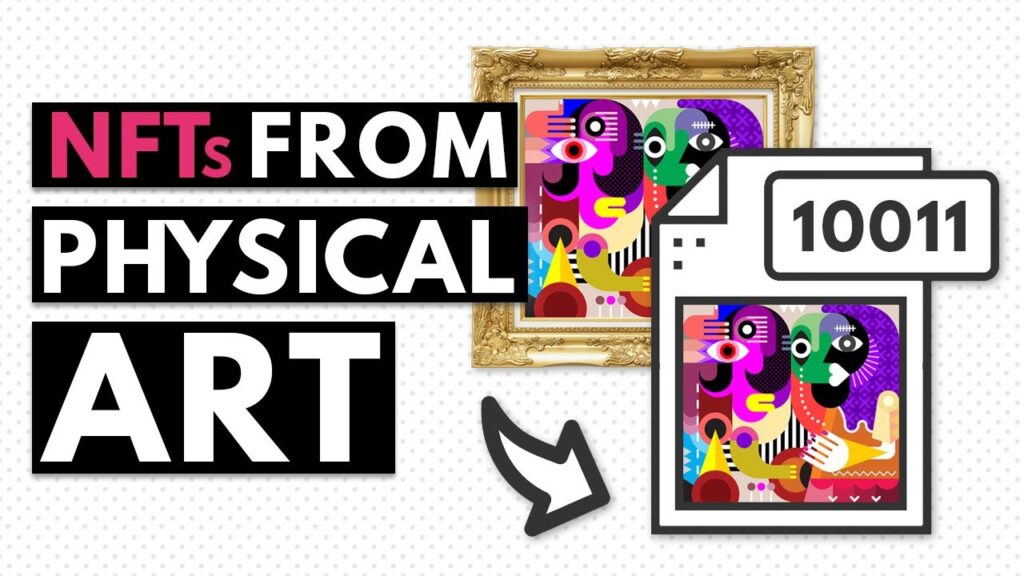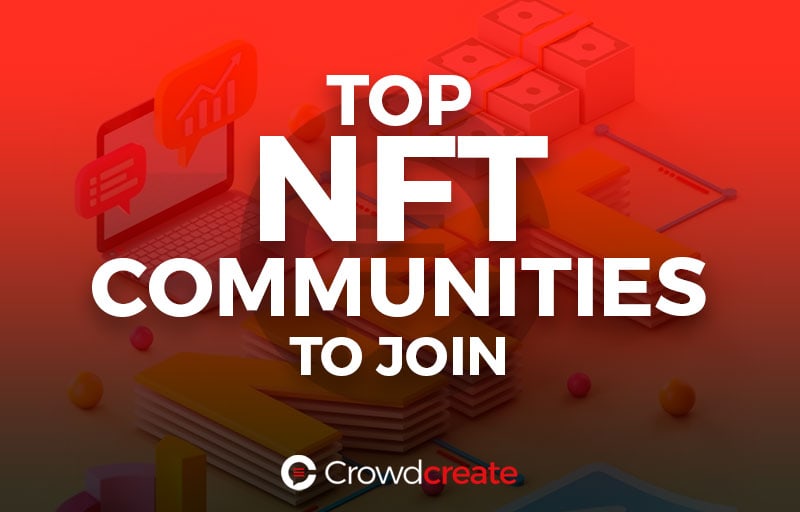The world of digital art has recently been shaken by the rise of NFTs or Non-Fungible Tokens. These unique tokens allow artists to sell their digital creations and retain ownership rights over them, making it an attractive investment opportunity for art collectors and enthusiasts. However, the question that lingers in everyone’s mind is, how much does it cost to mint an NFT?
Minting an NFT involves a complex process of creating a digital asset, encoding it on the blockchain, and then making it available for sale. The cost of minting an NFT varies depending on several factors, such as the platform used, the size and complexity of the artwork, and the network fees. In this article, we will explore the different costs associated with minting an NFT and help you understand what to expect when you decide to create and sell your digital artwork through this exciting new medium.

What is an NFT?
NFTs (Non-Fungible Tokens) are special types of digital assets that are stored on a blockchain. Unlike traditional digital assets, these tokens are unique and not interchangeable. This means that each NFT has a unique identifier that can be used to trace back to its original owner. NFTs have become popular in recent years as they provide a secure way to store and trade digital assets.
How Much Does it Cost to Mint an NFT?
Minting an NFT can be an expensive process depending on the platform used. The cost of minting an NFT varies by platform, but generally includes transaction fees, smart contract fees, and gas costs. Transaction fees are usually charged by the platform and are paid in the form of a cryptocurrency, such as Ethereum. Smart contract fees are also charged by the platform and are used to cover the costs of running the smart contract. Gas costs are the fees charged for using the Ethereum network to facilitate the transaction.
Transaction Fees
Transaction fees are the most common type of fee when minting an NFT. These fees are charged by the platform and are paid in the form of a cryptocurrency, such as Ethereum. The amount of the fee varies by platform, but generally ranges from 0.5% to 1.5% of the total transaction amount. Additionally, some platforms may also charge a flat fee for each transaction.
Smart Contract Fees
Smart contract fees are fees charged by the platform in order to cover the costs of running the smart contract. These fees are usually charged on a per-transaction basis and can range from a few cents to a few dollars depending on the complexity of the transaction. Additionally, some platforms may charge a flat fee for each transaction.
Gas Costs
Gas costs are the fees charged for using the Ethereum network to facilitate the transaction. These fees are paid in the form of Ether (ETH) and are determined by the current price of Ether and the amount of data required to process the transaction. The cost of gas can vary significantly depending on the complexity of the transaction, but generally ranges from $0.01 to $0.10 per transaction.
Platform Fees
In addition to transaction fees, smart contract fees, and gas costs, some platforms may also charge a fee for minting an NFT. These fees are usually charged on a per-token basis and can range from a few cents to a few dollars depending on the platform. Additionally, some platforms may also charge a flat fee for each transaction.
Other Costs
In addition to the fees mentioned above, there may be other costs associated with minting an NFT. For example, some platforms may charge a fee for listing the NFT on their marketplace. Additionally, some platforms may also charge a fee for marketing the NFT. Lastly, some platforms may charge a fee for taking a percentage of the sales price of the NFT.
Conclusion
Minting an NFT can be an expensive process, as there are a variety of fees and costs associated with the process. Transaction fees, smart contract fees, gas costs, platform fees, and other costs can all add up to a significant amount. It is important to research the various fees and costs associated with minting an NFT before beginning the process.
Frequently Asked Questions
Non-fungible Tokens (NFTs) are digital assets that are stored on the blockchain and can be used to represent ownership of real or virtual items. They are unique and can be used to prove ownership of digital assets, such as artwork, music, videos, and more.
1. How much does it cost to mint an NFT?
The cost to mint an NFT varies depending on the platform used to mint it. Generally, the costs can range from a few dollars to a few hundred dollars, depending on the complexity of the NFT and the platform that is used. For example, Ethereum-based platforms are typically more expensive than others, due to the cost of gas fees associated with transactions on the network. Additionally, some platforms may charge a fee for listing an NFT, as well as a percentage of the sale when it is sold.
It is important to note that the cost to mint an NFT does not necessarily equate to the value of the NFT. The cost of minting the NFT is simply the cost of getting it listed and stored on the blockchain. The value of the NFT will depend on market factors, such as supply and demand, as well as the uniqueness and desirability of the NFT.
2. Is it possible to mint an NFT for free?
Yes, it is possible to mint an NFT for free, depending on the platform used. Some platforms offer free NFT minting services, although these may be limited in terms of features and customization. It is also possible to use a blockchain that does not require any fees to mint an NFT, such as the Ethereum-based platform Rarible.
It is important to note, however, that even if the NFT is minted for free, there may still be other costs associated with listing and selling the NFT. Additionally, free NFT minting may not be as secure or as reliable as other platforms, so it is important to do research and compare platforms before deciding which one to use.
3. What is the difference between an NFT and a cryptocurrency?
The main difference between an NFT and a cryptocurrency is that an NFT is a digital asset, while a cryptocurrency is a digital currency. An NFT is a token that represents ownership of a digital asset, such as artwork, music, or videos. Cryptocurrencies, on the other hand, are digital currencies that are used to buy goods and services, or as an investment asset.
Additionally, while both NFTs and cryptocurrencies exist on the blockchain, they are stored on different networks. NFTs are typically stored on Ethereum-based networks, while cryptocurrencies are stored on their own blockchain networks. Finally, cryptocurrencies are fungible, which means that one unit is interchangeable with another, while NFTs are non-fungible, meaning that each NFT is unique.
4. What are the benefits of minting an NFT?
Minting an NFT has a number of benefits, including the ability to prove ownership of digital assets, such as artwork, music, and videos. Additionally, NFTs are stored on the blockchain, meaning that they are immutable and can not be changed or counterfeited. This makes them a secure way to store and transfer digital assets.
NFTs are also a great way to monetize digital assets. They can be bought, sold, and traded on the open market, allowing creators to monetize their work and investors to speculate on the future value of the NFT. Finally, NFTs are becoming increasingly popular, meaning that there is a large and growing market for them.
5. Are NFTs secure?
Yes, NFTs are secure due to the fact that they are stored on the blockchain. The blockchain is a distributed ledger technology that is tamper-proof and immutable, meaning that data stored on the blockchain can not be changed or counterfeited. This makes the NFTs stored on the blockchain secure, as they are protected from manipulation and theft.
Additionally, many NFT platforms use additional security measures to protect the NFTs stored on their networks. For example, some platforms may require users to authenticate their identity before being able to list an NFT, and may also use encryption and other security measures to protect users’ data. It is important to research the security measures used by each platform before deciding which one to use.
How Much Does It Cost to Mint an NFT?
In conclusion, the cost of minting NFTs can vary greatly depending on various factors such as the platform used, the complexity of the artwork, and the size of the file. However, despite the cost, NFTs have opened up new opportunities for artists, musicians, and creators to monetize their work in a way that was not possible before. With the growing popularity of NFTs, we can expect to see more creators embracing this technology and exploring its potential.
As with any new technology, there are still many unknowns and uncertainties surrounding NFTs. However, one thing is clear – NFTs have the potential to revolutionize the way we think about art and ownership. Whether you are an artist looking to monetize your work or a collector looking for a unique piece to add to your collection, NFTs are definitely worth exploring. As this technology continues to evolve, we can only imagine the possibilities that lie ahead.


